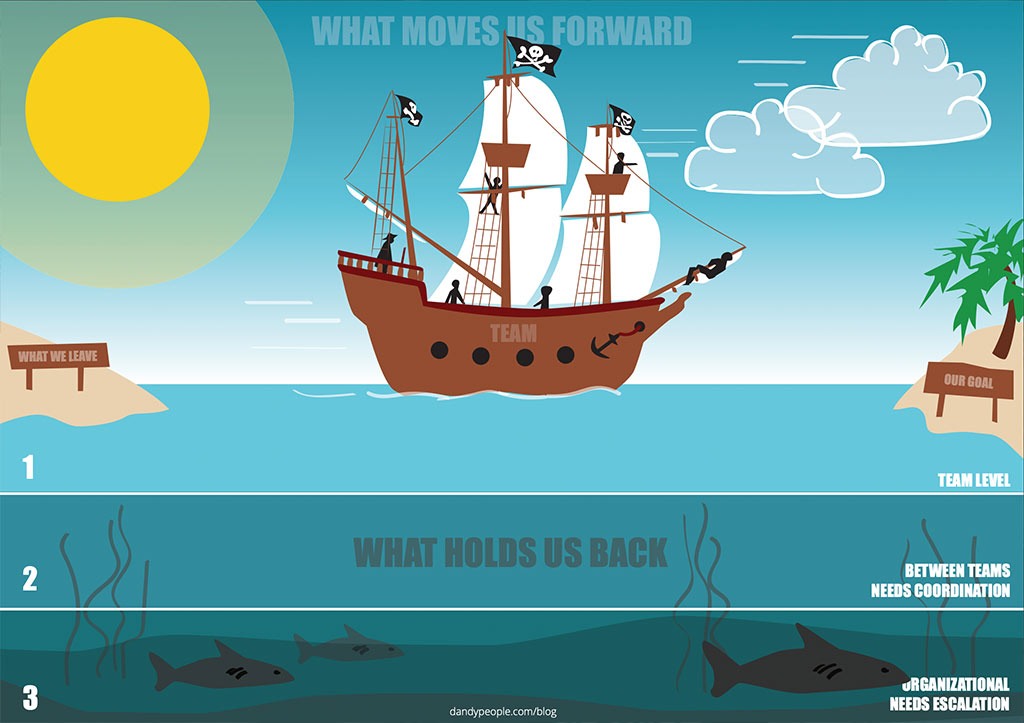The retrospective is the improvement engine in the Agile team. It gives the team a structured way to inspect and adapt, making continuous improvements in their processes and ways of working. It is often done once every sprint when working in Scrum, or every second week when working in Kanban. But it could also be held at the end of a bigger project with everyone involved, or once every quarter across all Agile teams and stakeholders depending on what you want to improve. The purpose is to uncover what is working well that you should do more of, and what could be improved next to make the team even better. That is why it is the by far the most important ceremony and should be guarded and never down-prioritized.
In the retrospective, the team focuses on what worked well and what could be improved during the last sprint. There are many different ways to facilitate a retrospective and if you search for “Agile Retrospective” you get more than 2 000 000 results.
It is traditionally the Scrum Master who is responsible for improving the team’s process and creating a well-functioning and high-performing team, and thereby to facilitate the retrospective. A skilled Scrum Master can pick the right type of retrospective depending on the maturity of the team and whatever issues the team has to deal with at the moment, making sure all voices are heard and facilitating it in a way that enables the team to come up with the improvements and actions needed to make adjustments and experiments in the next sprint.
Usually a retrospective for a 2 week sprint is a 1-2 hour workshop. If you are conducting a big retrospective for many teams or for a longer period of time, you might want to add more time – and also do some more preparations beforehand, but a common sprint retrospective is usually covered in 1-2 hours with no more preparations than for the Scrum Master to plan the facilitation and invite all participants.

The 5 phases of a retrospective
Retrospectives are usually built up by five phases, with different flavors of facilitation:
- Setting the stage
- Collecting and mapping data
- Prioritization
- Ideating and coming up with what actions to take
- Closing the retrospective
Make sure to make space for the improvement work in the team’s daily work
The actions from the sprint should be taken, or started, during the next sprint. And it is up to the team to decide who will do what, just like any other task on the sprint board, it is not the Scrum Master’s job to implement the improvements.
The best way to make this happen is usually to put each action in a story and to put it up on the Scrum or Kanban board along with the rest of the work- these are improvement stories that should be in every sprint. If some of the problems are impossible for the team to solve by themselves, the action should be brought to someone who can help. Some teams have a so-called “Scrum of Scrum” where all Scrum Masters meet up regularly to share their improvement areas and the actions that they need support with, or you could use a “Management Action Door”, where all teams put up actions that they need help with and meet up with people who can help on a regular basis to make it happen. You can probably figure out more ways to make it happen, what is important is that the environment for the team can be improved also with support from outside their own possible mandates and capabilities.
Tip:
If your team has a working agreement you ask them to bring it to the retrospectives, to reflect on how well they are following it and if it is helping the team to work well together. If your team doesn’t have one, spend 15-20 minutes on your first retrospective to create it.






